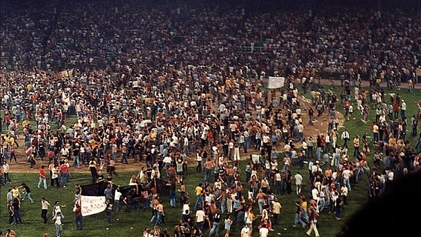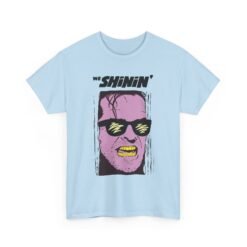Music History, Unkown History
Disco Demolition Night: The Night Music and Baseball Collided
Introduction to Disco Demolition Night
Disco Demolition Night, held on July 12, 1979, at Comiskey Park in Chicago, stands as a notable event in the intersection of music and sports, embodying the cultural zeitgeist of the late 1970s. During this period, disco music was at the height of its popularity, promoting vibrant nightlife and fostering a spirit of freedom. However, the genre also faced a growing backlash from various segments of society, as it was often associated with excess, commercialism, and a departure from traditional musical forms.
The social climate of the time was marked by a transformation in cultural attitudes, leading to a significant division among music fans. Many rock music enthusiasts viewed disco as a threat to their beloved genre, perceiving it as a challenge to the established norms of popular music. As anti-disco sentiments began to take hold, various factions emerged, sparking debates about musical authenticity, identity, and taste.
The origins of Disco Demolition Night can be traced back to a promotional event organized by the Chicago White Sox’s marketing team, specifically driven by team owner Bill Veeck and his assistant, Mike Veeck. The idea was to burn disco records in a theatrical demonstration in front of spectators attending a game against the Detroit Tigers. The event quickly gained momentum, reflecting the burgeoning anti-disco sentiment. On that fateful night, fans were invited to bring disco records for destruction, which they could exchange for reduced admission prices, creating a lively atmosphere charged with anticipation.
Ultimately, what began as a baseball promotion evolved into a chaotic spectacle that drew thousands of attendees and became emblematic of the cultural conflicts of the era. Disco Demolition Night serves as a fascinating case study of how music, cultural identity, and social movements intersected in a single moment, leaving a lasting legacy in both the sports and music worlds.
The Event Details: A Night to Remember
On July 12, 1979, Comiskey Park in Chicago became the unlikely stage for an event that would merge the worlds of music and baseball in an unforgettable spectacle known as Disco Demolition Night. This unique promotion, masterminded by local radio personality Steve Dahl, aimed to ignite the public’s dissatisfaction with disco music, which had become increasingly popular and was the source of much contention among rock enthusiasts. The Chicago White Sox, seeking to boost attendance figures amid declining interest in baseball, partnered with Dahl to attract fans to what was billed as a double-header against the Detroit Tigers.
The evening began with a significant turnout, drawing an estimated 50,000 fans to Comiskey Park, many of whom were encouraged to bring their disco records. These records would ultimately serve as the focal point of the night’s antics. The atmosphere was electric; the excitement was palpable among attendees, many of whom were eager to witness this unconventional event. Local radio broadcasts helped to cultivate a sense of camaraderie among the fans, who were united not just by their shared love of rock music but also by the communal disdain for disco’s rising prominence.
As the night progressed, the real spectacle began during the intermission between games. An explosion of chaos ensued as Steve Dahl and his team lit the records on fire within a makeshift pit in the outfield. The ensuing fireworks led to fans rushing the field, resulting in an unexpected and tumultuous scene that captivated both attendees and those watching from home. Despite attempts to control the frenzy, the destruction of the disco records overshadowed the original baseball game, forever marking July 12, 1979, as a turbulent moment in the history of music and sports.
The Aftermath and Consequences
Disco Demolition Night, held on July 12, 1979, resulted in a chaotic spectacle that left an indelible mark on both baseball and music. The event escalated into an unexpected riot as thousands of attendees, gathered for the scheduled doubleheader between the Chicago White Sox and the Detroit Tigers, became embroiled in a frenzy of destruction. The concert-like atmosphere, fueled by the destruction of disco records, took a turn when fans stormed the field, leading to the cancellation of the second game. The White Sox management faced considerable fallout as police struggled to regain control of the situation, ensuring safety in the midst of rampant celebrations and hostile demonstrations.
Law enforcement’s response to the riots was criticized for being disproportionately forceful, as officers sought to quell the unrest while navigating a crowded stadium. Many attendees reported feeling unsafe as tensions escalated, and the event prompted a reevaluation of security protocols at sporting events. Media coverage of the night further sensationalized the incidents, embedding Disco Demolition Night in public consciousness as an example of cultural clashes, particularly between disco supporters and rock enthusiasts who sought to dismiss the genre.
The cultural implications of Disco Demolition Night were profound and long-lasting. It marked a significant turning point in the public’s perception of disco, contributing to its decline in popularity as a dominant genre. The event highlighted a societal backlash against disco music, intertwining with broader cultural sentiments that rejected not just a music style, but a lifestyle associated with it. In the years that followed, many artists and producers began to pivot towards different genres, including punk and new wave, as audiences sought fresh musical identities. This shift would eventually alter the landscape of popular music, making Disco Demolition Night not only a pivotal moment in sports history but also a catalyst for change within the music industry.
Legacy of Disco Demolition Night
Disco Demolition Night, held on July 12, 1979, at Comiskey Park, remains a significant point of reference in the narrative of American pop culture, symbolizing the clash between music and societal values. The chaotic event, designed as a promotional stunt, saw a vast crowd congregating to witness the destruction of disco records, leading to unforeseen chaos and unrest. Over the decades, this event has been revisited in various media, including documentaries, books, and movie retrospectives, which typically contextualize it within broader discussions of cultural and social dynamics.
The legacy of Disco Demolition Night extends beyond mere entertainment; it reflects a moment in time when the cultural acceptance of dance music began to wane. In various conversations about music culture, this event is frequently cited as indicative of the shifting trends in public sentiment, showcasing a palpable rejection of disco that echoed sentiments in the wider societal landscape. The public’s response, which ranged from outright enthusiasm to deep-seated animosity toward disco, illustrates complex attitudes towards musical genres and their cultural implications.
Documentaries have critically analyzed the ramifications of the evening, exploring how Disco Demolition Night signified a broader cultural backlash against the disco movement, revealing an undercurrent of tension in American society. The concept of public entertainment has evolved since then, with modern events often incorporating more inclusive themes. Nevertheless, Disco Demolition Night serves as a reminder of how entertainment can spark significant social commentary, a testament to the ways music and culture interlace with societal changes and historical moments. In retrospect, Disco Demolition Night not only signifies the end of an era for disco but also encapsulates the intricate dynamics of acceptance and rejection within American culture, ensuring its continued relevance in discussions about music and entertainment history.

















